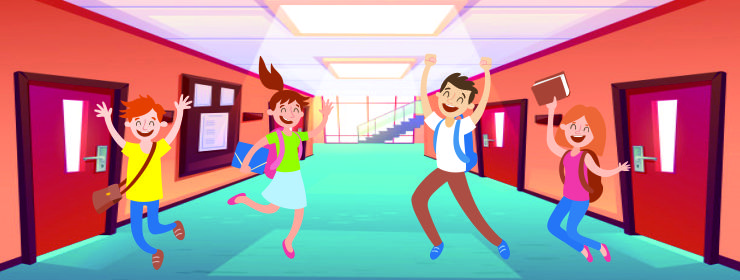Different Types of Communication & Ways to Improve
Communication is a basic feature of life it allows us to share and convey our thoughts, emotions, opinions, and vital information in different forms. Everything around us either living or no- living communicates with us in different ways. Our minds and senses are designed to understand what is being communicated and the intelligence to utilize this information. A child can learn several life skills from school because a school is not only a place to grow academically but it is a good place to learn several things. Different kinds of communication skills are essential for different aspects of our life, social, business, and family relationships, and defense against danger, among others. Classroom communication exists in three categories that are non-verbal, verbal, and written. Verbal communication means simply anything that a teacher or maybe student speaks aloud. Nonverbal communication refers to the body language that a person expresses. Written communication is to express through writing to a specific audience, such as report card assignments of students or comments. Students and teachers interact with one another in so many different ways and use all three of these types of communication. Apart from classroom communication, there are five types of communication:-
Five Types of Communication
- Verbal Communication
Verbal communication occurs when we communicate with others. It can be like face-to-face or talking to someone over the telephone, or Skype or Zoom, etc. Some verbal communications or engagements are informal, such as discussion with a friend, while others are more formal. It is important to communicate to express yourself And when it occurs face-to-face it is much expressive than any other way, because the words are important, they cannot be separated from non-verbal communication or any other way.
- Non-Verbal communication
Non-Verbal communication or Statement is what we do while we speak often says more than the actual words. Non-verbal communication contains facial expressions, body language, posture, touch, eye contact, and hand movements. For example, if you’re engaged in a conversation with your friend about your daily routine or homework, it is important to express and pay attention to both the words and their non-verbal communication. An expressive face or eye contact can say lots of words.
- Written Communication
Whether it is an application for leave or a letter to a friend all form of written communication has the same goal.it is important to remember poorly constructed sentences and careless errors make you look bad; and second, ensure the content of the message is something you want to convey.
- Listening to others
Listening is also a part of communication, active listening allows us to understand things better. If we cannot listen to others we can not effectively engage with them.
- Visual Communication
Understand how you communicate is the first step to communicating more effectively. Sharing a post on online media or sharing videos images memes to communicate something is also another way of communication. Visual communication is also an effective way of expression because it contains your visuals.


Leave a Reply